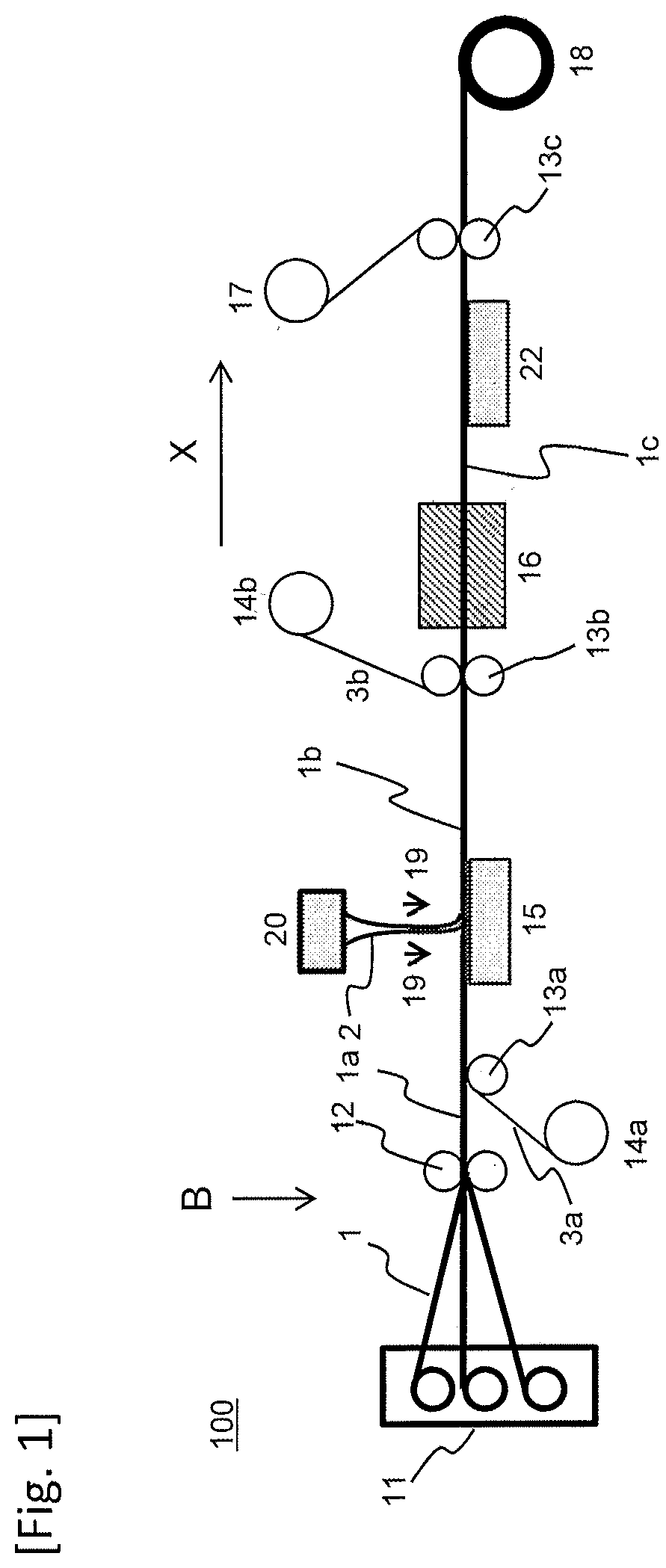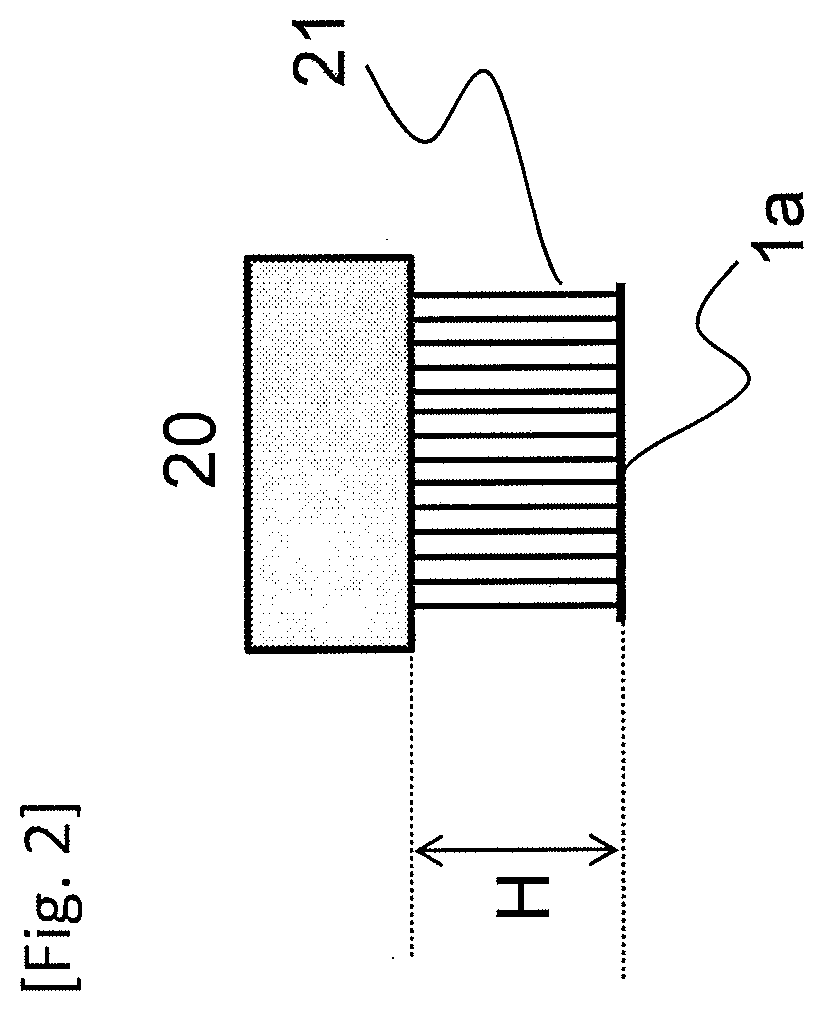Production method for prepreg, and production method for fiber-reinforced composite material
- Summary
- Abstract
- Description
- Claims
- Application Information
AI Technical Summary
Benefits of technology
Problems solved by technology
Method used
Image
Examples
example 1
[0077]The process in the present Example is shown in FIG. 1 (however, the impregnation device 16 was not used). Sixty yarns of carbon fiber (T800S-24K, manufactured by Toray Industries, Inc.) were arranged unidirectionally to form a carbon fiber sheet. The carbon fiber sheet had a width of 300 mm. Then, a release paper sheet was inserted onto the lower face of the carbon fiber sheet, the resulting sheet was introduced on a table, and the sheet was conveyed at a speed of 20 m / minute linearly in the coating step viewed straight from the side. Then, using the coating head 20 described in FIG. 1, the carbon fiber sheet was coated with a matrix resin on the table. During this, the coating conditions were as follows. The temperature of the coating head was 85° C., the area per a hole of the nozzle was 0.16 mm2, the through-put-rate per a hole was 1.0 g / minute, and the number of nozzle holes in the width direction was 220. In addition, air was supplied at 0.15 MPa as an air flow, and the c...
example 2
[Example 2] and [Example 3]
[0081]Coating with a matrix resin was carried out in the same manner as in Example 1, and the results were evaluated in the same manner as in Example 1, except that the coating head height was changed as in Table 1 and that the coating height H was changed to 70 mm (Example 2) and 100 mm (Example 3).
[0082]When the coating was carried out continuously for 10 minutes, the carbon fiber sheet was observed straight from the side, found to have neither laxation nor looseness, and recognized as being linearly conveyed. Next, the coating state was checked by visual observation, and the spinning state was found to be stable. Furthermore, the coating state was observed using a high speed video camera, and in Example 2, the resin fiber was found to have been formed into continuous fibers as in FIG. 2. Furthermore, the fibrous resins were hardly flowing in the horizontal direction, the resin reached linearly from the nozzle to the carbon fiber sheet, and the interval ...
example 4
[0084]Coating with a matrix resin was carried out in the same manner as in Example 1, and the results were evaluated in the same manner as in Example 1, except that the coating head height was changed to 140 mm.
[0085]When the coating was carried out continuously for 10 minutes, the carbon fiber sheet was observed straight from the side, found to have neither laxation nor looseness, and recognized as being linearly conveyed. Next, the coating state was checked by visual observation, and the spinning state was found to be stable. Furthermore, the coating state was observed using a high speed video camera, and the observed state showed that the continuous fibers in the latter half of the spin-line were snaking, and that the fibrous resins were blown by an air flow above the carbon fiber sheet. After the coating, the prepreg conveyance system in the vicinity of the coating device was checked for contamination by visual observation, and almost no contamination was found.
[0086]In addition...
PUM
| Property | Measurement | Unit |
|---|---|---|
| Height | aaaaa | aaaaa |
Abstract
Description
Claims
Application Information
 Login to View More
Login to View More - R&D
- Intellectual Property
- Life Sciences
- Materials
- Tech Scout
- Unparalleled Data Quality
- Higher Quality Content
- 60% Fewer Hallucinations
Browse by: Latest US Patents, China's latest patents, Technical Efficacy Thesaurus, Application Domain, Technology Topic, Popular Technical Reports.
© 2025 PatSnap. All rights reserved.Legal|Privacy policy|Modern Slavery Act Transparency Statement|Sitemap|About US| Contact US: help@patsnap.com



